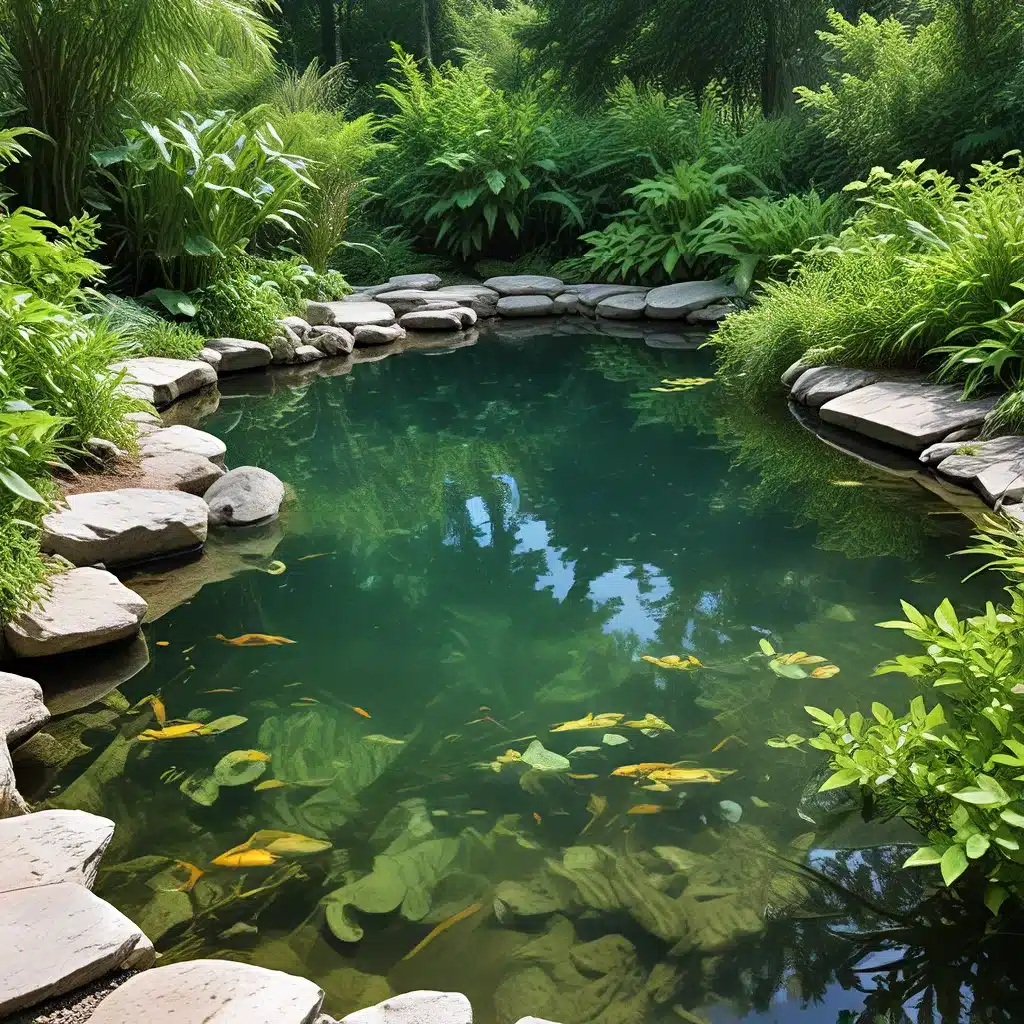
Establishing a Thriving Aquarium Habitat
Maintaining a healthy, balanced aquarium ecosystem is crucial for the long-term wellbeing of your aquatic inhabitants. Whether you’re a seasoned aquarist or a newcomer to the hobby, understanding the intricacies of water quality, species-specific care, and aquascaping techniques can make all the difference in creating an environment that supports vibrant and diverse aquatic life.
Water Quality: The Foundation of Aquatic Health
Achieving and maintaining optimal water quality is the cornerstone of a successful aquarium. Water quality parameters, such as pH, temperature, and dissolved oxygen levels, must be carefully monitored and adjusted to ensure the overall health and vitality of your aquarium. Neglecting these crucial elements can lead to a decline in fish and plant well-being, and in some cases, even catastrophic consequences.
One of the most important water quality considerations is the nitrogen cycle, a natural process that converts harmful ammonia and nitrites into less toxic nitrates. Maintaining a well-established nitrogen cycle is essential for the long-term sustainability of your aquarium. Regular testing and prompt action to address any imbalances in this cycle can prevent the buildup of toxic compounds and ensure a thriving aquatic ecosystem.
Another critical factor in water quality is pH balance. Different aquatic species have specific pH preferences, and maintaining the appropriate pH range is crucial for their health and growth. Factors such as substrate composition, plant life, and the presence of certain decorations can all influence the pH of your aquarium water. Understanding the pH requirements of your aquarium inhabitants and making necessary adjustments is a vital aspect of responsible aquarium maintenance.
Species-Specific Care: Tailoring Your Approach
Each aquatic species has unique requirements and adaptations that must be considered when designing and maintaining your aquarium. Thoroughly researching the specific care needs of your fish, plants, and other aquatic life is essential for their long-term wellbeing.
Fish Care: When selecting fish for your aquarium, it’s important to consider factors such as compatibility, tank size, water flow preferences, and feeding habits. Some fish species are known to be more aggressive or territorial, while others may require specific water parameters or specialized diets. Carefully planning your fish stocking and providing appropriate living conditions can prevent conflicts and ensure the overall health of your aquarium inhabitants.
Aquatic Plant Care: Incorporating a diverse array of aquatic plants can greatly enhance the aesthetic appeal and biological balance of your aquarium. However, different plant species have varying light, nutrient, and substrate requirements. Understanding the specific needs of your chosen plants and providing the necessary conditions can promote their growth and help maintain a thriving aquatic ecosystem.
Invertebrate Care: Aquarium invertebrates, such as shrimp, snails, and crustaceans, can play important roles in maintaining water quality and adding visual interest to your setup. Ensuring that the tank environment, water parameters, and feeding regimes are suitable for these delicate creatures is crucial for their long-term survival and the overall health of your aquarium.
By tailoring your care approach to the unique needs of each species, you can create a harmonious and thriving aquatic environment that supports the diverse array of life within your aquarium.
Aquascaping Techniques: Designing for Beauty and Balance
Aquascaping, the art of creating visually stunning underwater landscapes, is a crucial aspect of maintaining a healthy and aesthetically pleasing aquarium. Proper aquascaping techniques not only enhance the beauty of your setup but also contribute to the overall balance and functionality of your aquatic ecosystem.
Hardscape Elements: The foundation of an aquascape is often the hardscape, which includes items such as rocks, driftwood, and aquarium-safe decorations. Carefully selecting and positioning these elements can create depth, visual interest, and suitable hiding and breeding spots for your aquatic inhabitants.
Plant Arrangement: The strategic placement and selection of aquatic plants can greatly influence the overall aesthetic and ecological balance of your aquarium. Incorporating different plant species with varying heights, textures, and growth habits can create a harmonious and naturalistic underwater landscape.
Substrate Selection: The choice of substrate, such as gravel, sand, or specialty substrates, can impact the health and growth of your aquatic plants, as well as the overall appearance of your aquascape. Selecting the appropriate substrate type and depth can enhance the visual appeal and support the thriving of your aquarium ecosystem.
Lighting and CO₂ Integration: Proper lighting and carbon dioxide (CO₂) supplementation are essential for the long-term success of your aquascaping efforts. Carefully researching and implementing the appropriate lighting and CO₂ systems can ensure the optimal growth and vibrant coloration of your aquatic plants.
By mastering the art of aquascaping and incorporating these techniques, you can create a visually stunning and biologically balanced aquarium that provides a captivating and immersive experience for both you and your aquatic inhabitants.
Maintaining a Healthy Aquarium Ecosystem
Achieving and sustaining a thriving aquarium ecosystem requires a comprehensive approach that encompasses water quality management, species-specific care, and strategic aquascaping. By staying vigilant and proactively addressing any issues that may arise, you can ensure the long-term health and prosperity of your aquatic environment.
Regular water testing and maintenance are crucial for maintaining optimal water quality. Performing partial water changes, cleaning filters, and closely monitoring water parameters can help prevent the buildup of harmful substances and maintain a stable, life-supporting environment.
Consistent monitoring and adjustment of aquarium conditions based on the specific needs of your aquatic inhabitants is also essential. This may include adjusting lighting, temperature, and CO₂ levels, as well as ensuring proper feeding regimes and maintaining the overall aesthetic of your aquascape.
By embracing the principles of aquatic wellness and dedicating time and effort to the care and maintenance of your aquarium, you can create a vibrant and sustainable ecosystem that brings joy and fascination to you and your aquatic companions. Remember, a healthy aquarium is a testament to your dedication as a responsible and passionate aquarist.
Explore the wide range of high-quality aquarium equipment, fish, plants, and accessories available at King Aquarium to help you achieve your aquatic wellness goals and build your dream underwater oasis.

